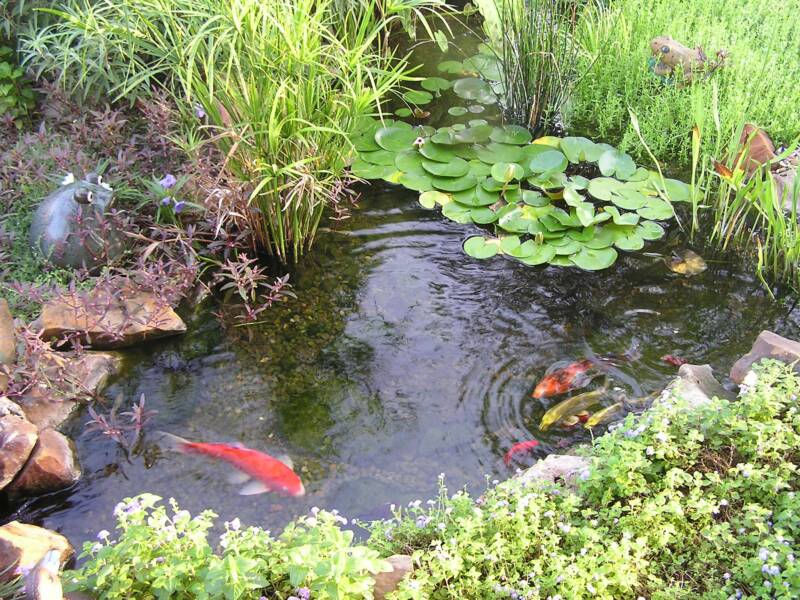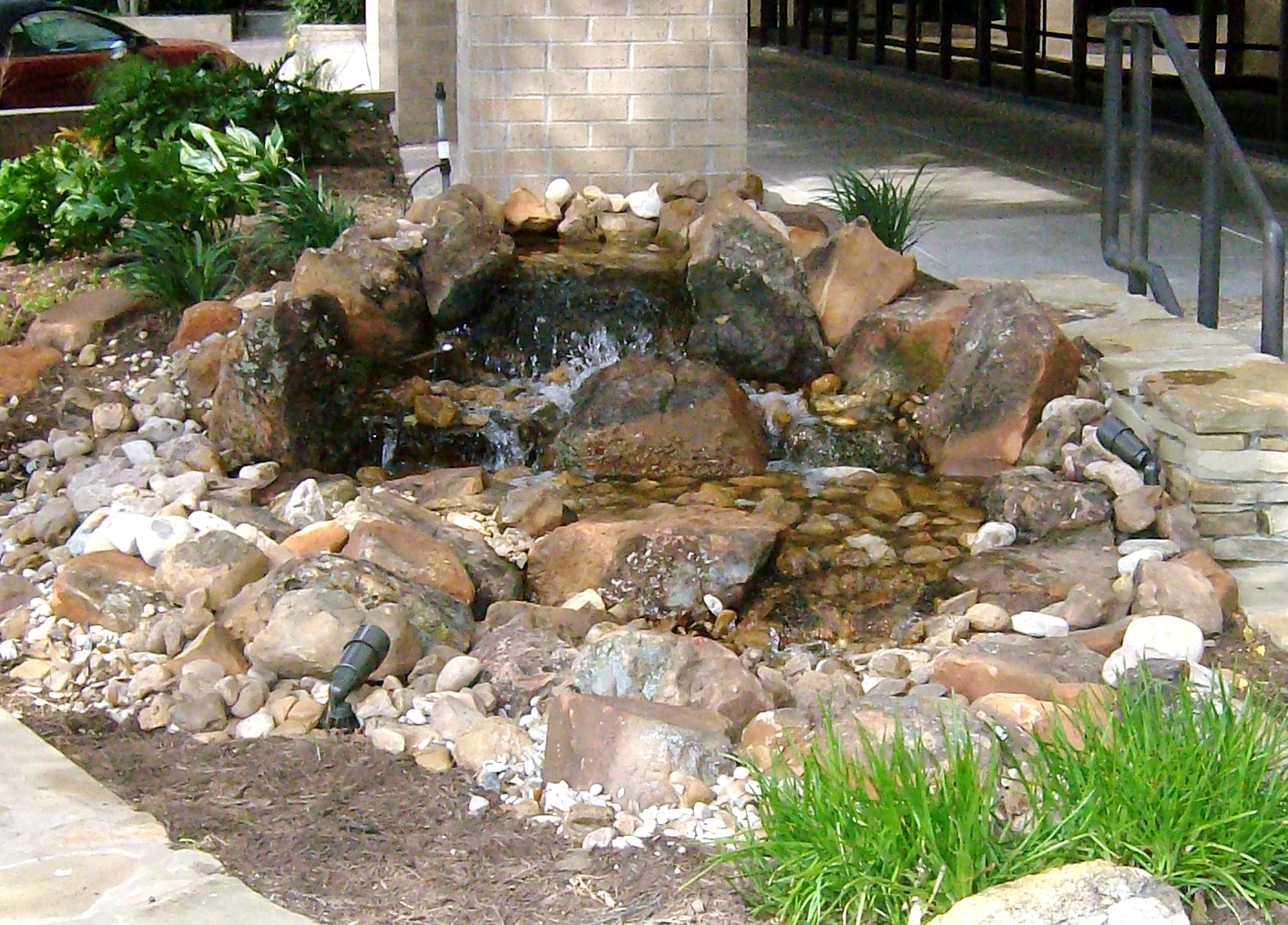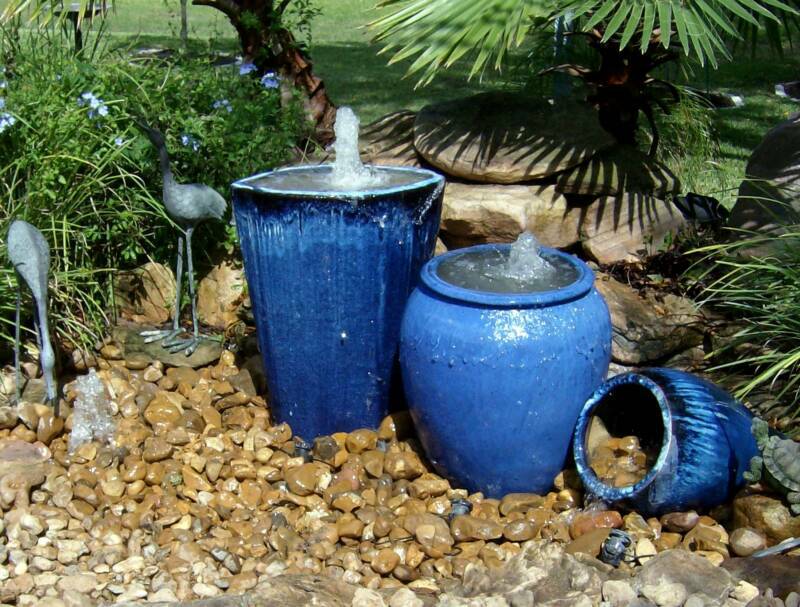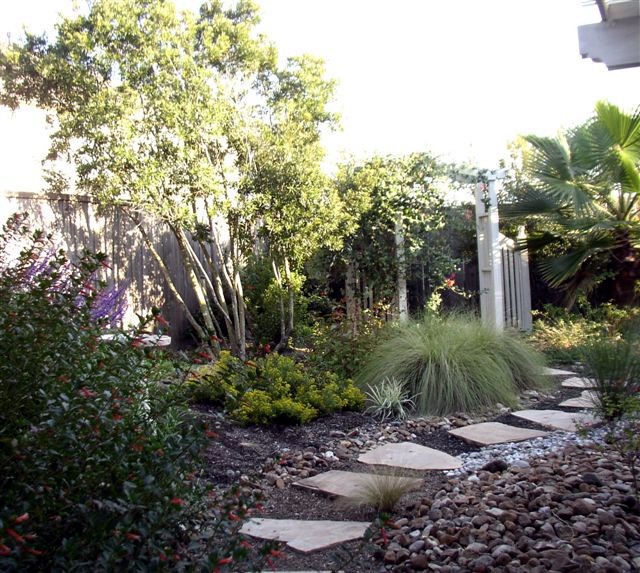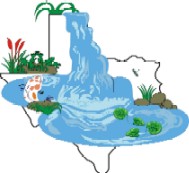


Rainwater Harvesting
Organic Ecosystem Ponds
Pondless Waterfalls
Urn and Fountain Features
Water-Wise Landscapes
Meet Your Water Feature Professionals


Texas Ponds and
Water Features
Moonlight Water Gardening
by Matt Boring
The Natural Water Gardener
It’s that time of the year again. The fall vegetables and winter flowers have been planted. It’s time to relax and start planning next year’s garden and landscape improvements. One way to make your yard unique is to plant what’s known as a ‘moonlight garden.’ After spending years as a landscape designer, I found the moonlight gardening concept to be an intriguing one. If you’re unfamiliar with the concept, allow me to fill you in a little bit.
In the days before electric lights and landscape nightlighting, most flower gardens had nothing to offer after dusk. Someone somewhere had the ‘bright’ idea of planting lots of white flowers so that the garden would have appeal after dark with just the light of the moon to help accent the area. The earliest documented moonlight garden was created in Massachusetts in 1833. It had two borders 700 feet long by 12 feet wide, which were exclusively devoted to white flowers. This renegade gardener also accented his moonlight garden with white cattle, sheep, pigeons, and a white dog. Wow!
Perhaps the best known white garden was created in England at Sissinghurst Castle. Vita Stockwell-West created a garden room of large evergreen hedges that enclosed, and were a perfect backdrop to, beds of white annuals and perennials as well as a weeping silver-leaved pear tree and grey-leaved plants such as Lamb’s Ear, Lavender, and the Giant Scotch Thistle.
The moonlight gardens of today tend to be smaller. They are usually located next to doorways, patios, and ponds. They don’t usually have cows and sheep, but instead use white accents of other varieties to emphasize their brilliance in the nighttime hours. These accent pieces include, but are not limited to, birdbaths, large flower pots, statues, window boxes, and statues.
While some people would find the concept of an all-white garden a bit boring, myself included, and wouldn’t think that a white flower pot with white flowers in it would provide enough contrast, there are plenty of ways to incorporate white into your landscape and water garden area without sacrificing appeal. Break it up, alternating splotches of white flowers with flowers of other colors or silver-leaved plants like Artemisia or Dusty Miller in between. Use the white for borders and pale yellow or blue flowers behind. Use bright colors like red or orange for interest during the day, but use them sparingly so that they don’t dominate the effect. Sprinkle the white throughout your landscape, not just in the flower beds. An arbor or fence covered with Confederate Jasmine or a flowering shrub such as Gardenia pulls the eye upward and helps complete a three-dimensional effect.
Another great idea is to have white areas appear and disappear throughout the year. Some plants bloom white for only a little while each year and using them will give your landscape a constantly-changing appeal. Candytuft blooms a brilliant white, but when it’s not blooming it makes a great evergreen border that stays low. A fence or trellis covered with Pyrocantha is covered with white blooms in the spring, and goes on to feature the dazzling red berries all winter. Bradford Pear trees in the background also show white each spring and usually put on a great show of colors in the fall before their leaves drop. In the right soil Azaleas provide an intense display of flowers and become a small to medium hedge the rest of the year.
You can use other plants for white flowers that last for many months each year. I could go on all day, but I’ll list a few examples. Plants such as Begonias, Petunias, Lantana, Verbena, and Pansies can be planted in masses to provide bright areas in the landscape. Alyssum makes a great border flower during the winter. White Plumbago produces flowers profusely each year until the first good frost. Hibiscus, including the Rose Mallow which produces gigantic flowers brings white up into the second level. Using white can extend up to the trees as well. Silver-leaved varieties such as Maple feature pale leaves that can seem very bright under a full moon. Magnolia, or in smaller yards Dwarf Magnolias provide you with not only huge white flowers, but also a heavenly aroma.
To further enjoy your moonlight garden, be sure to provide plants that have fragrances. Some flowers’ aromas hang heavy in the night air and are great for the moonlight garden. Sambac or Confederate Jasmine provide not only white flowers, but heavenly aromas as well. Sweet Alyssum has a smell like fresh honey. White Roses are another great choice with an enchanting scent. Getting a good whiff of a Gardenia bush in full bloom or a Magnolia blossom almost puts me in a coma. Angel’s trumpet also has a fantastic fragrance, but is poisonous to plant-eating pets and children, so be warned.
You can even incorporate your water garden into the moonlight garden theme. White Lotus flowers add both visual appeal as well as fragrance to the nighttime pond. Tropical night-blooming water lilies open in the late afternoon and proudly hold their gigantic blooms above the water before closing in the morning. Dwarf variegated cattails feature green and white leaves and create the brown catkins that give cattails their daytime interest as well. Variegated Japanese Sweetflag adds brightness to the pond’s edge. The delicate pale-green foliage of Parrot’s Feather also reflects the moonlight well. Stargrass is a shallow water plant the forms large white ‘stars’ at the tips of its variegated grass-like leaves. Of course a couple of large white Koi swimming in the pond itself would really complete the picture.
Since colorful flowers tend to all fade to grey in the late evening hours, it makes sense to incorporate areas of white into your overall landscape picture, even if you don’t use it exclusively. Of course you want the area to be appealing in the daytime as well, so breaking up the white with other colors is only logical. So while you’re sitting inside by the fire this winter, thinking about what to do in the yard next year, think about adding some white to your garden. Next summer, you could be relaxing by your pond in only the moonlight looking up at the stars, hearing only the sound of water splashing in your waterfall as the fragrance of Jasmine, Roses, and Gardenias drifts by. I can almost hear the locusts in the trees now............

